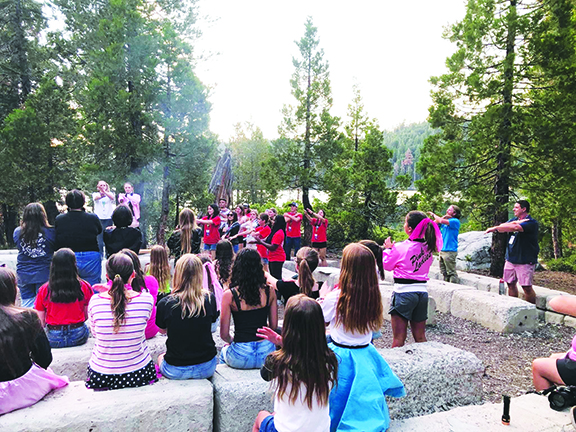By Craig W. Anderson
San Joaquin County’s 4-H program continues building following the upheaval caused by the COVID pandemic and the program’s stability is demonstrated by its 12 active clubs with 605 members and 123 volunteers.
“The first year of the pandemic hit 4-H hard when we had to go online with our meetings,” said Alyssa High, 4-H Youth Program Representative. “In the county, quite a few members participated in the online program.”
The 2022-23 member numbers weren’t much different from the 612 of the previous year and this indicated “the importance of building a strong foundation that is inclusive of different projects for a varied demographic,” said SJFB President Andrew Watkins.
He also noted that the high number of 4-H members showing at AgFest “was a good sign of the activity and that the number of kids remains solid.”
High said, “The kids really look forward to AgFest. It’s been said that the key to 4-H is growth and education and that’s true. We’re working to extend our programs and to establish after school activities.”
“Interestingly, most of the kids in 4-H aren’t from farming families,” said SJFB First Vice President Les Strojan. “However, the wide variety of 4-H activities allows many kids to take part in ag-oriented ones in addition to various others. The excellent participation in AgFest exposes members to farm activities including raising animals, something they otherwise wouldn’t know.”
High said the summer camp held last year – the Sky Mountain Outdoor program – was attended by 90 volunteers and youth and “all went well. Those attending hiked, fished, participated in archery and canoeing was added.”
She said the clubs in the county did activities on their own such as the Valley View club which focused on farming and the Oak View, Tokay Colony, Live Oak, Alpine and Victor clubs participated in the Lodi Farmers Market’s Ag Night.
“During the Christmas season many of the clubs gave back to their local supporters and population,” High said. “The fact that most of the members and parent volunteers were returnees was impactful. We’re seeing the move more toward the farming side of the membership.”
Volunteers key to 4-H future
Among the challenges 4-H faced – and still does – is “getting more of a buy-in from adults,” High said. It’s important parents participate, otherwise we won’t have some of the activities due to lack of supervision. Fortunately we have long-timers who do a great job.”
Burnout on the part of volunteers remains an important issue to deal with, High said. “Those who’ve volunteered for a long time want to pass the baton. 4-H remains a work in progress where we work with different demographics, always focusing on making everything interesting.”
Should a dearth of adults to help occur, some of the larger events will fall by the wayside.
This could hamper “another 600 kids from knowing about ag as a good thing,” Strojan said. “A successful program depends on who the leader is. Obviously, a lot depends on the leaders.”
Animal sales important
The AgFest auction “drew a big crowd,” he said, demonstrating that 4-H is a “link that teaches kids and adults what agriculture’s all about and that may be the most important aspect of the 4-H program. It’s fun and everyone, including the general public, learns what ag is and its importance.”
Surveys have been sent out by the UCCE to the different participants to determine the direction of a new curriculum for next year.
4-H is 122 years old and has obviously come a long way from the Corn Clubs in the Midwest that founded the organization and, High noted. “That dedication established so long ago is still going on. The key elements then were growth and education and they remain the keys to our success today.”
What once was old is new again is an adage that applies to 4-H except that its search for new, exciting and educational experiences for its young members has not waned for over a century.

